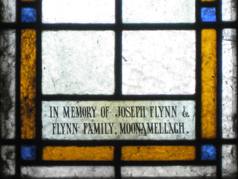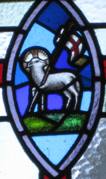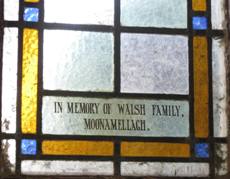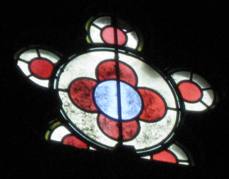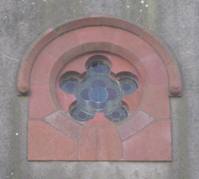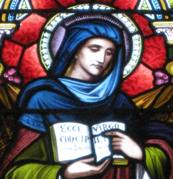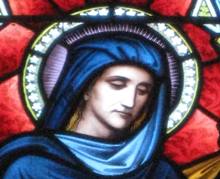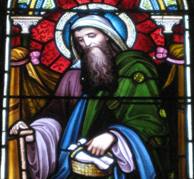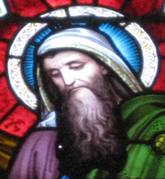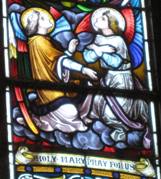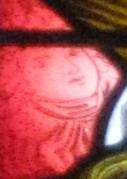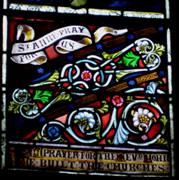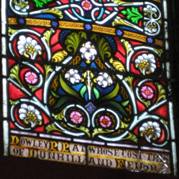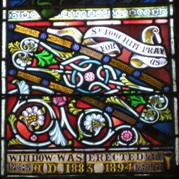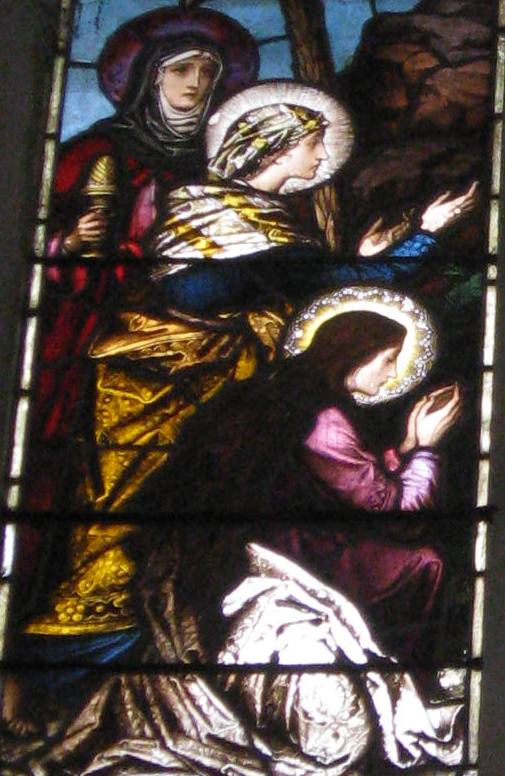Saint Anne’s window
According to tradition and some apocryphal literature, Saint Anne (or Ann or Anna, from the Hebrew name Hannah, meaning favour or grace) was the mother of Mary and the grandmother of Jesus. Legends and stories abound concerning Anne and she is sometimes confused with Anna the Prophetess who was present at Jesus’ presentation in the Temple.
In the window, Anne is holding a book bearing the inscription “ECCE VIRGO CONCIPIET” (“Behold! The virgin will conceive”, in Latin). This is a reference to two passages in the Bible, one in the Old Testament and one in the New Testament –
“Therefore the Lord himself will give you a sign. Behold, the virgin shall conceive and bear a son, and shall call his name Immanuel”. [Isaiah 7:14].
“But as he considered these things, behold, an angel of the Lord appeared to him [Joseph] in a dream, saying, ‘Joseph, son of David, do not fear to take Mary as your wife, for that which is conceived in her is from the Holy Spirit. She will bear a son, and you shall call his name Jesus, for he will save his people from their sins.’ All this took place to fulfil what the Lord had spoken by the prophet: ‘Behold, the virgin shall conceive and bear a son, and they shall call his name Immanuel (which means, God with us)'”. [Matthew 1:20-23]
Matthew considers the Isaiah passage to be a prophesy of the virgin birth of Jesus, which is why the inscription in St. Anne’s book is so important.


